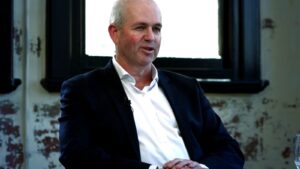Five reasons fixed income still matters
Investors face a very uncertain environment today, with the COVID-19 pandemic still playing out, geopolitical tensions and a global economy characterised by low growth and high debt.
It’s a good time for investors to remind themselves that diversification is an investment principle that never goes out of style, and that the among the most effective assets for portfolio diversification is fixed-income.
In addition to diversification, there are a number of other reasons why fixed-income should continue to be an important part of investors’ portfolios. They are risk-efficiency, underlying return potential, drawdown risk mitigation and income generation.
Diversification. The only asset that demonstrates a consistent low-to-negative correlation to risk assets over time is fixed-income[1]. Morningstar data shows that over a five-year period, the US Aggregate Bond Index has a near-zero correlation to the S&P 500 and other major equity indexes, and it has a very low correlation to hedge fund and private equity indexes.
The US Treasury Index has a negative correlation to major equity, hedge fund and private equity indices over a five-year period. Negative correlation implies that if risk assets fall fixed-income assets will rise.
There’s little visibility regarding what may happen over the next six to 12 months and that means portfolio diversification still matters – it always has and it always will.
Return-to-Risk Efficiency. Fixed-income indices have relatively low volatility (measured as standard deviation), which means that investors are taking relatively low risk for the returns they get from bonds and other fixed-income assets. While potential returns may appear to be limited in the current market environment, allocating some capital to fixed-income is efficient, given the modest risk profile of the asset.
At the end of 2020, the standard deviation of the Bloomberg Barclays US Aggregate Bond Index was 3.2 per cent and the risk/return ratio was 1.4. The standard deviation of the S&P 500 Index was 15.3 per cent and the risk/return ratio was 1. In other words, the return on fixed-income was higher for a given amount of risk[2].
Underlying return potential. Market volatility can produce returns that are well above what a fixed-income security may be yielding at any given time. For instance, in early 2020, the yield-to-maturity of the Bloomberg Barclays US Aggregate Bond Index looked unattractive at a little over 1%, but the index returned 7.51% over the year.
Drawdown risk mitigation: There has been a bias towards private credit in recent years, as investors hunt for yield, but investors have not seen how such illiquid investments will perform during a prolonged bear market.
We do know by how much, and how quickly, equity markets can correct. The Dow Jones Industrial Average hit a high of 29,511 points on 12 February 2020 and then fell to 18,591 points on March 23 – a fall of 37% in 40 days[3].
Rising returns from fixed-income offset much of that loss[4]. Between 9 January and 9 March 2020 US 30-year Treasuries netted 32 per cent as their yield fell to a low of 0.99%. For investors in the decumulation phase, the risk mitigation benefit of fixed-income comes with the added advantage of a valuable source of income.
Income generation. Investors often compare the yield on government bonds to the higher yield on dividends from equities. What they ignore is that to capture that dividend yield they must invest in an asset class with double-digit trailing annual volatility.
It’s also important to remember that fixed-income assets will continue to produce income, while dividend yields might dry up in certain circumstances.
Finally, the best approach to fixed-income investment is through an actively managed fund. A passive approach potentially introduces dangers and limitations, especially excessive duration risk.
The Bloomberg Barclays Global Aggregate Index has over seven years of duration, which means the index has high sensitivity to changes in interest rates. Moreover, the largest constituents in these indices are the largest borrowers. A passive manager cannot express duration, curve, sector or security preferences in the portfolio construction in the way an active manager can.
IMPORTANT INFORMATION
Past performance is not a guide to future performance.
Issued by Legg Mason Asset Management Australia Limited (ABN 76 004 835 849 AFSL 240827) which is part of Franklin Resources, Inc. Any reference to ‘Legg Mason Australia’ is a reference to Legg Mason Asset Management Australia Limited. These opinions are subject to change without notice and do not constitute investment advice or recommendation. Past performance is no indicator of future performance.
[1] Source: Western Asset, Morningstar
[2] Source: Western Asset, past performance is not a guide to future performance.
[3] Source: Western Asset
[4] Past performance is not a guide to future performance.










